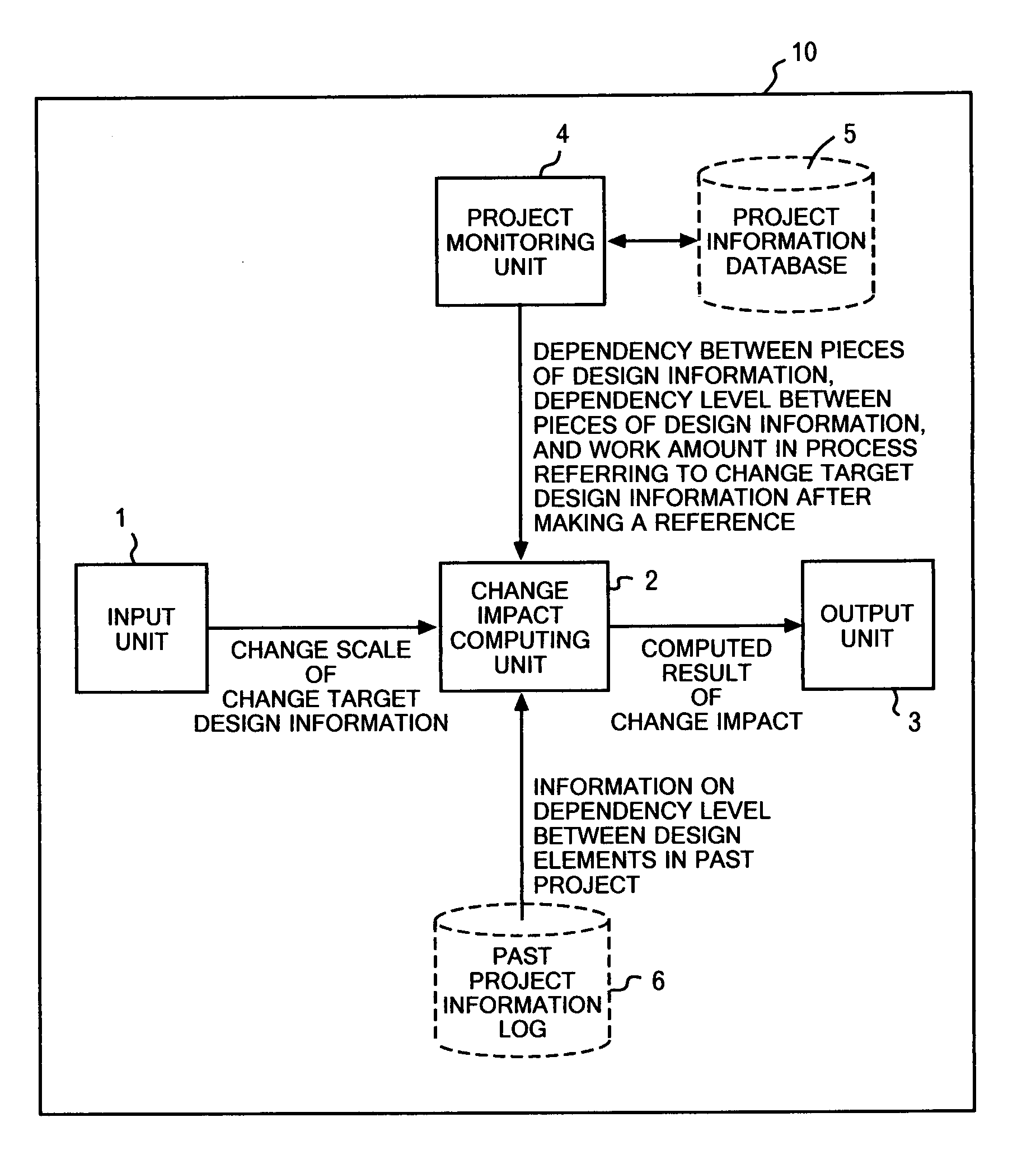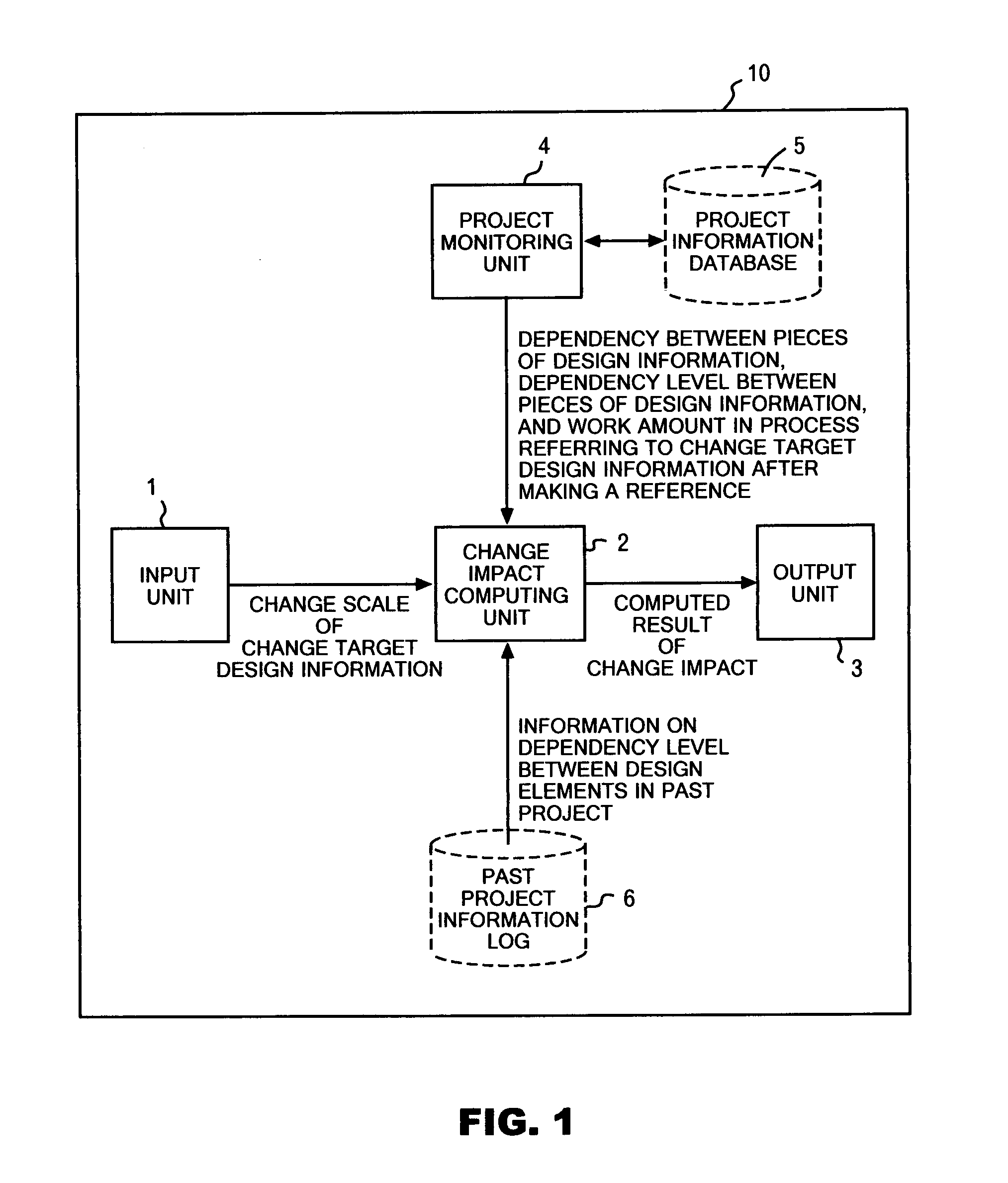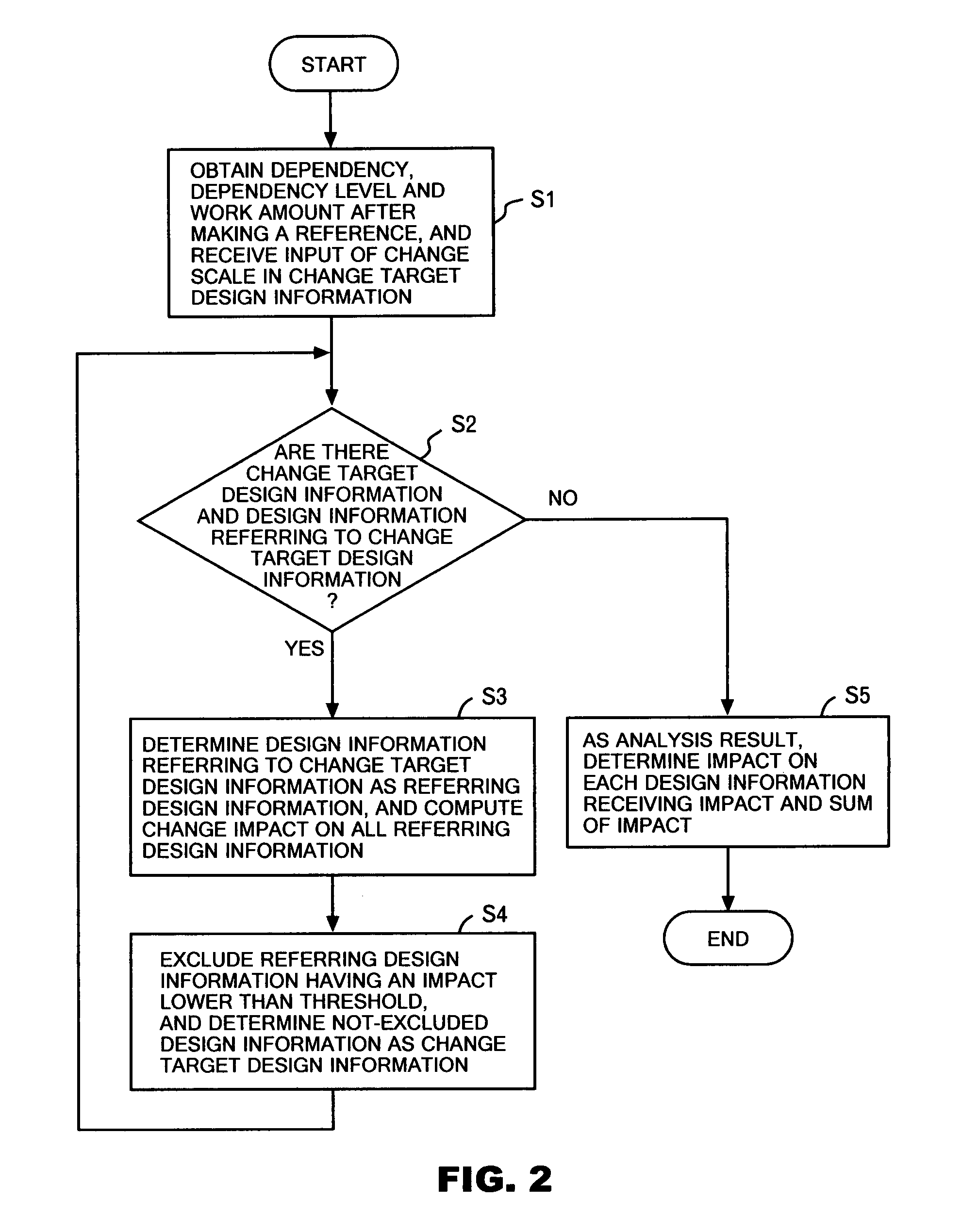Apparatus and method for analyzing design change impact on product development process
a technology of product development process and analysis method, applied in the field of analysis method of change impact in product development process, can solve the problems of increasing work period and cost, large amount of time and cost, and difficulty in obtaining such information
- Summary
- Abstract
- Description
- Claims
- Application Information
AI Technical Summary
Problems solved by technology
Method used
Image
Examples
first embodiment
[0046]In a first embodiment, descriptions will be provided for an example in which the model defined in the section (hereinafter, referred to as the basic model) is extended by employing a probability technique.
[0047]In the basic model, the rework ratio computation function f outputs a probability density function instead of a constant number. More specifically, the function f outputs the function indicating the probability density distribution by expressing a rework ratio as a probability variable. In this way, probability behavior of an error or the like in an estimated value and the model can be expressed. FIG. 4 shows a rework computation model including this variance. The function f (r0, c01) outputs a probability density function p1 (r01). Here, r01 denotes a rework ratio, and the product of the rework ratio r01 and the work amount w1 is the rework amount. In addition, as described in a reference document, NetMBA.com, “PERT,” which can be found at that web site at the operati...
second embodiment
[0048]A second embodiment suggests an example in which the basic model is able to deal with an indirect (secondary) change impact as is the case with the conventional techniques. Here, “an indirect change impact” indicates a rework occurring in a process of creating a third piece of design information that is also changed due to the change impact of a second piece of design information changed due to the change impact of a first piece of design information. In this case, there is no input value of a change request input for the third piece of design information that is indirectly influenced. Accordingly, the input value is computed by using an estimated impact on the second piece of design information that the third piece of design information directly refers to.
[0049]Moreover, when a change impact computed in the foregoing way is simply added to the work amount of each process, tasks in the respective processes to deal with the change is modeled so that the tasks would be concurren...
third embodiment
[0050]In the foregoing descriptions of the basic model, several formulation methods for a rework ratio computation function and the like are not described specifically. Accordingly, a third embodiment shows an example of the definitions of the change request input, the dependency level, and a formulation method of the rework ratio computation function.
[0051]Firstly, suppose that design information D1 is created by referring to design information D0 as shown in FIG. 5. Here, suppose that the design information D0 is the target for a change, the change request input r0 denotes an index indicating how many percentage of a task already completed for creating the design information D0 must be reworked (hereinafter, this index is referred to as a change scale), and the dependency level c01 denotes an index indicating how many percentage of the task creating the design information D1 is based on the design information D0. When w1 denotes the work amount carried out for the design informati...
PUM
 Login to View More
Login to View More Abstract
Description
Claims
Application Information
 Login to View More
Login to View More - R&D
- Intellectual Property
- Life Sciences
- Materials
- Tech Scout
- Unparalleled Data Quality
- Higher Quality Content
- 60% Fewer Hallucinations
Browse by: Latest US Patents, China's latest patents, Technical Efficacy Thesaurus, Application Domain, Technology Topic, Popular Technical Reports.
© 2025 PatSnap. All rights reserved.Legal|Privacy policy|Modern Slavery Act Transparency Statement|Sitemap|About US| Contact US: help@patsnap.com



